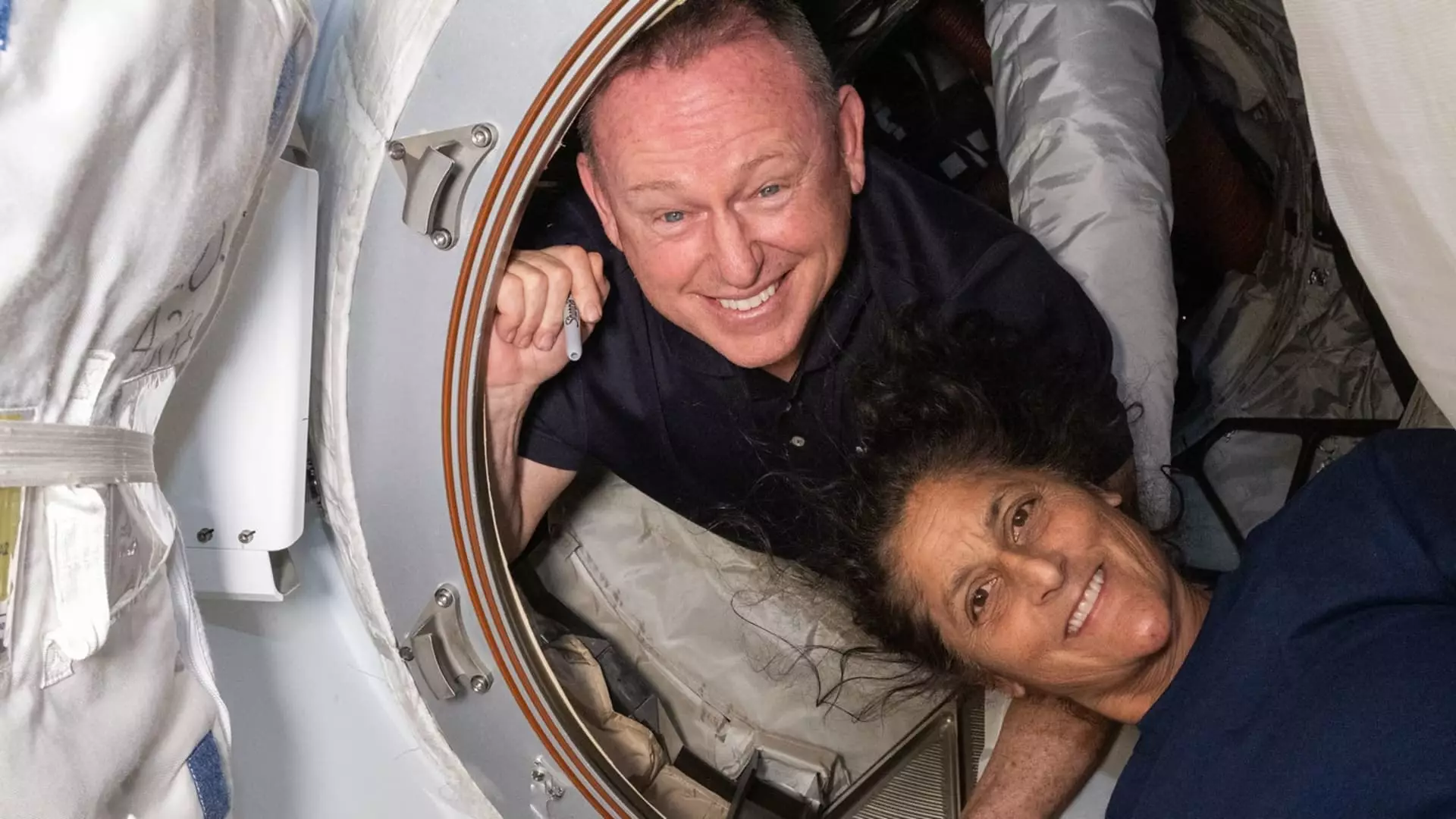In an age of technological wonders and human exploration, the recent saga of NASA astronauts Butch Wilmore and Suni Williams captures both the aspirations and challenges of venturing into the cosmos. Initially embarking on a brief mission aboard the Boeing Starliner capsule, the duo found themselves unwillingly entrenched in an extended sojourn at the International Space Station (ISS) that lasted nearly nine months—far longer than the intended nine-day test flight. Their plight was sparked by malfunctions in the Starliner’s thrusters, raising eyebrows and concerns about Boeing’s reliability in the competitive space race.
This situation serves as a narrative emblematic of the precarious balance between ambitious innovation and the harsh realities of engineering. It begs the question: at what point do we prioritize safety and reliability over speed in the race for technological advancement?
The Space Race and Corporate Rivalry
The struggles of the Starliner are not merely isolated incidents. They reflect the larger corporate rivalry between Boeing and SpaceX, spearheaded by Elon Musk. NASA’s dream of a dual-vendor space shuttle system has faltered in the face of Boeing’s misfortunes. With over $2 billion in losses attributed to the Starliner program, one has to wonder how much longer NASA will hold on to the aspiration of fostering a competitive edge in space travel. In an era when private companies should ideally drive innovation through healthy competition, companies like Boeing risk becoming a burden instead.
The political ramifications further complicate matters. Once President Trump implied that astronauts were “stranded” due to political delays from the Biden administration, the stage was set for an inflammatory narrative. This intersection of space exploration and politics diverges from the core scientific mission of space travel. Politicizing space exploration diminishes its integrity and can result in misguided policies that prioritize political optics over scientific progress.
A Redefinition of Astronaut Life
During their protracted stay at the ISS, Wilmore and Williams seamlessly transitioned into the routine of life among the stars, conducting scientific experiments and maintenance as they awaited their return. This adaptability speaks volumes about the psychological resilience required for astronauts. Williams’ sentiment of not feeling “abandoned” resonates, yet it also highlights a fundamental dissonance between human emotion and the stark operational realities of space missions.
Their experience reflects a dual-edged sword: while they contributed significantly to ongoing spatial research, they also resurrect questions surrounding the robustness of mission planning. Why were safety protocols not more thoroughly assessed before the assignment of a crew to such a potentially flawed capsule?
Impact on Future Missions
Wilmore and Williams’ ordeal, while tinged with personal aspirations, subsequently became a cautionary tale for NASA and aerospace industries alike. The space mission ideally needed to showcase seamless, effective teamwork between private companies—this mission betrayed that ideal. As they transitioned to a more competent SpaceX Dragon capsule for their return, NASA had to scramble, adjusting previously set rotation schedules and ambitions for crewed flights.
One can’t help but ponder the long-term ramifications on NASA’s trust in Boeing. Should the agency consider downgrading its reliance on a company that has already proven incapable under pressure? In a field where precision is paramount, the stakes are incredibly high. NASA’s decision to proceed with SpaceX raises eyebrows about whether its faith in the market will outperform internal capabilities—a bearish sentiment for those who champion American enterprise and innovation.
The Human Element of Space Exploration
Ultimately, Wilmore and Williams’ experience champions not just technological prowess but the human spirit’s tenacity in the face of adversity. The emotional and mental trials faced by astronauts reinforce the need for stronger psychological support systems within NASA missions. Williams’ longing for home—her dogs and family—illustrates the personal stakes at play in space exploration; astronauts are not merely cogs in a cosmic machine. They are human beings with hopes, fears, and emotional heft.
As we hurtle forward into the next chapters of space exploration, one may hope that agencies like NASA will not only learn from these setbacks but will also realign their strategies to enhance astronaut welfare while navigating the dramatic complexities of their missions.

